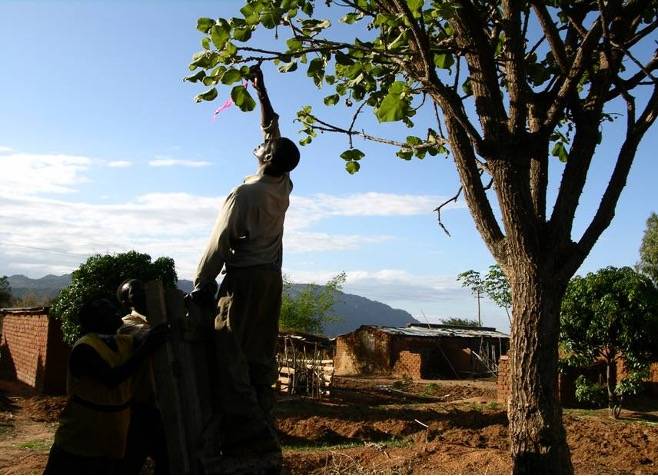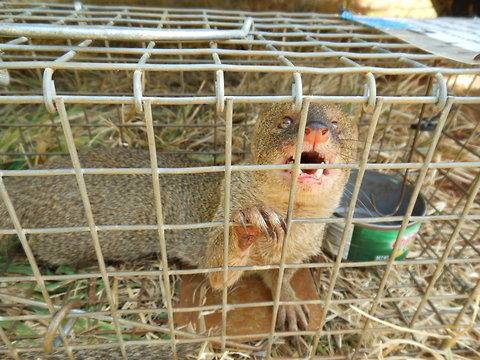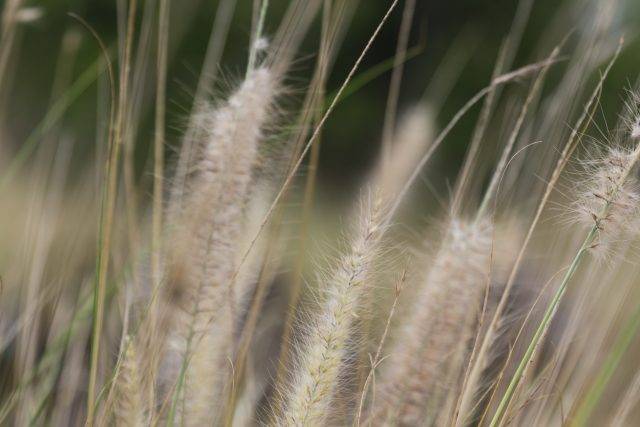
This story was originally published by Honolulu Civil Beat and is republished with permission.
Mohsen Ramadan’s name is stamped on the corner of a yellowing copy of entomologist Fillipo Silvestri’s 1914 report on Mediterranean fruit flies.
The record chronicles Silvestri’s 11-month voyage from Europe, around Africa, to Australia and, finally, Hawai’i. Along the way, Silvestri collected parasites of the fruit fly, one that was ravaging Hawaiian horticulture at the time. The then-U.S. territory was suffering, its products barred from entering the mainland.
The African wasps Silvestri introduced to Hawai’i did the job, killing off the problem. It’s an early example of biological control in Hawai’i, a scientific realm that continues to be paramount to the state’s ecological and agricultural balance.
But government bureaucracy and inadequate research facilities are now blamed for delaying potentially significant relief to industries like macadamia and coffee and possibly even providing a “silver bullet” in the battle against the invasive grasses that fueled the deadly wildfires on Maui.
Silvestri’s work more than a century ago inspired Egyptian-born Ramadan to move to Hawai’i in 1981, to study at the University of Hawai’i, and eventually become a modern-day Silvestri, the Department of Agriculture’s only exploratory entomologist.
Ramadan has spent the past 26 years in the role, traveling between Hawai’i and more than a dozen countries, scouting for insects and pathogens that could be introduced to help eradicate or control invasive insects and weeds across Hawai’i.
His research has taken him across Southeast Asia for melon flies, maile pilau, and banana aphids and throughout Africa to find enemies of fireweed, coffee berry borer, and erythrina gall wasp, among other places and pests.
His name has since appeared on more than 68 journal articles. And given that he works in Hawai’i — the invasive species and extinction capital of the world — there are plenty more in the pipeline.
Ramadan’s most recently published article is on the macadamia felted coccid, a microscopic pest to Hawaii’s lucrative macadamia nut industry.
His research shows it will be successful, but its release has been a decade in waiting, as regulations and permitting hold up the process.
“I do not complain much,” Ramadan said. “But this … this is a really long time.”
Welcoming the agents
When the wiliwili tree was facing extinction in the summer of 2005, Ramadan ventured to Tanzania to find solutions. Biologists who were colleagues at UH traveled with him across southern Africa, together finding 30 potential solutions by the end of 2006.

Four years later, a wasp was released in Hawai’i as a biological control agent.
It was a rapid response, especially considering the bureaucratic steps involved in the process, according to UH entomology professor Mark Wright, who worked with Ramadan on the project.
“Sometimes it can take 20 years to get something like that to happen,” Wright said.
The process of identifying and locating potential biocontrol agents might take a few months or a year, but the permitting process can take far longer because delays are possible at every step on the federal or state level.
Entomologists such as Wright and Ramadan accept that the lengthy process is there for a reason but still bristle with it, especially as such problems seem acute.
The macadamia nut industry awaiting final sign-off to release a miniscule Australian wasp to kill off the felted coccid is another example.
Without being able to deploy the wasp yet to control the pest, the industry is left with the use of pesticides as the only viable alternative to stay in business, Hawaii Macadamia Nut Association President Nathan Trump says.
The industry has been effectively pesticide-free for the past 20 years, thanks to biological controls, according to Trump.
“As an organic macadamia nut farmer, I would much prefer to import and release beneficial insects, as opposed to paying thousands of dollars to chemical companies for products that can degrade our environment and harm human health,” Trump said in an email.
HMNA secretary Bonnie Self said the cost of spraying, with pesticides becoming increasingly expensive, spells the difference between breaking even and going into the red.
“But the cost of not spraying could be a loss of production or even the loss of an orchard,” Self said.
Hawai’i has a complex relationship with both pesticides and biological controls though, fed by global agrochemical conglomerates’ history in the islands and failed species control measures.
But to control invasive species, using what the sector calls integrated biological control, there is no entirely palatable solution.
Without biological controls, the only management options are manual or through chemicals.
DOA Plant Pest Control Branch Manager Darcy Oishi says the decision over what is better — pesticides or introduced species — is up to the public.
Hawai’i’s long history of biological control
The state has a long history of controlling undesirable species with enemies from their home ranges, bringing in 679 species of weeds and insects between 1890 and 1985.
When asked about unintended consequences, Ramadan retrieves three records: a large book for the years until 1985, a sheet of paper for the 72 agents imported between 1987 to 2000, and a sliver of paper for the years until 2015.

That decline is in part because warning bells were sounded in the mid-1980s, when the unintended effects of control agents’ introduction were highlighted by scientists, which led to a tightening of biosecurity measures worldwide.
Still, Ramadan is quick to point out that of the species introduced between 1890 and 1985, 13.6 percent had an effect on non-target species. Only 7 percent had any effect on native species in Hawaii, and none got close to killing them off.
And since 1967, none of the releases have had unintended effects, he said.
A popular example of failed biocontrols is the mongoose, which was introduced by plantations to control rat populations. The mongoose has since wreaked havoc on bird populations locally.
But that introduction, along with several others, were conducted outside the scientific process and at a time when ecosystem management was an afterthought.
Agriculture was the only consideration, but now entire ecosystems have value in the public eye, which fundamentally changes the entire process, Oishi said.
“We have mongoose and cane toad as permanent issues because there was a lack of pondering, philosophical thought, self-reflection and assessment on what is going to be the long-term impact,” Oishi said. “There was no generational approach.”
But there are functional realities that need to be addressed if there is to be more biological control in Hawai’i.
Chief among those barriers is the two facilities that exist in the state, according to Hawaii Invasive Species Council planner Chelsea Arnott.
“They’re outdated. They’re small. They don’t have the containment ratings to be able to work on really small organisms,” Arnott said.
Updating that infrastructure could make a substantial impact for environmental protection and reducing the effects of invasive species.
Oishi estimates it would cost approximately $ 5 million to build such a facility, with about $ 800,000 per year to keep it running.
That could serve to increase biological control work exponentially.
“There’s a volume discount, basically,” Oishi said.
In the weeds
At 71 years old, Ramadan has one final invasive species he wants to target before he retires: fountain grass.
That grass has been deemed invasive for years but was among the many blamed for fueling the August 8 Lahaina fires that killed at least 98 people, alongside guinea and buffel grasses.

Ramadan believes he found the potential answer in Africa in 2008, where the grass comes from and does not blanket the landscape as it does in Hawai’i.
There’s an unnamed insect that eats the seeds of fountain grass and a “smut fungus” that grows on them in their natural range.
“A project like this is not going to come in one or two years. It’s going to take 10 or maybe more,” Ramadan said. “There are other things we want to protect too: Kukiyu grass is from the same genus.”
Ramadan, despite being an entomologist, believes the fungus could be the state’s greatest defense against the invasive grass.
But it does not have a facility to do the research, so it may have to outsource the work to France.
“Pathogens tend to be very specific and some of them are very good at biological control,” Ramadan said. “I believe that this could be the silver bullet for fountain grass.”
“Hawaii Grown” is funded in part by grants from Ulupono Fund at the Hawaii Community Foundation and the Frost Family Foundation.
This story was originally published by Grist with the headline This state employee is scouring the Earth for solutions to combat invasive species in Hawai’i on Oct 21, 2023.